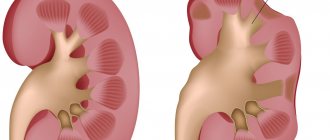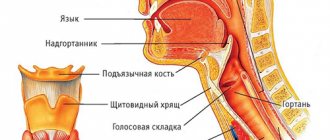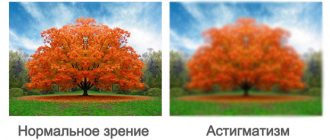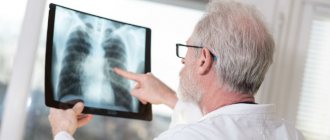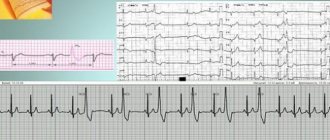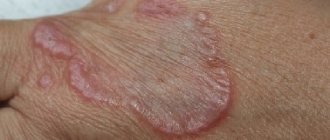Pyelonephritis is a nonspecific bacterial inflammation of the kidneys. The disease has both acute and chronic phases. Pyelonephritis is most often a consequence of acute respiratory diseases (ARVI). It can be found in children of all ages: newborns, infants, older children. Moreover, the consequences of this disease, in case of untimely or inadequate treatment, can be very serious.
Medical is a clinic where they help in solving a wide range of medical problems, including urological ones, for both adults and children. In each specific case, the treatment regimen is selected individually, based on the specific course of the disease and the characteristics of the patient’s body.
General information about the disease
Pyelonephritis is an inflammation of the kidneys of a bacterial nature. Almost every second newborn is susceptible to this disease, because the kidneys are not yet properly formed at the time of birth. Children who underwent intensive care immediately after birth are also at risk.
This disease affects the pyelocaliceal system and the renal parenchyma (internal tissues). It is detected mainly in children under seven years of age.
The main causative agent of pyelonephritis in a child is Escherichia coli , which settles in the urinary system. Also, the disease is often provoked by coccal infection. Source: A.A. Kozlovsky Pyelonephritis in children (literature review) // Problems of health and ecology, 2009, pp. 60-66
Important ! Parents should know and promptly identify signs of pyelonephritis in their child. The disease is dangerous in its chronic form and even fatal.
If treatment is not started on time
Of course, failure to provide timely assistance to a child with pyelonephritis risks the development of serious complications. The most unpleasant one is a purulent abscess. It comes to this quite rarely; more often, due to self-medication or an incorrect diagnosis, sclerosis of the kidney tissue begins, and then necrosis of the tissue of these organs.
Chronic pyelonephritis, which a child suffered in childhood, can leave a mark for life and torment an adult with renal failure, hydronephrosis and arterial hypertension. Fortunately, if you do not start the process, the consequences and complications of pyelonephritis can be safely avoided.
It is worth noting that pyelonephritis can be treated for quite a long time - from two weeks to three months, even when the main symptoms and high temperature no longer make themselves felt. After a course of antibiotics and discharge from the hospital, it is important not to repeat the mistakes of many parents and not stop taking medications. Pyelonephritis is an inflammation due to an infection that does not go away immediately, but smolders gradually. If you do not “extinguish” it completely, after a certain period of time it will make itself felt again and, perhaps, the disease will become chronic. Thorough and leisurely treatment is the only possible option to treat and prevent recurrent outbreaks of the disease.
Once faced with a sudden inflammation of the kidneys in a child, parents, as a rule, begin to take a very responsible approach to ensuring that their child does not become hypothermic and run to the clinic for urine tests after the first symptoms of a cold. As experts note, pyelonephritis is not a reason to be afraid of a relapse for the rest of your life and limit your child’s bathing and playing in the fresh air. It is better to take good care of his hygiene and work closely on strengthening the immunity of the whole family. Then not a single bacteria will penetrate into the strong child’s body.
Causes of the disease
Protozoa microorganisms, viruses, fungi, bacteria are the causative agents of inflammatory kidney diseases. In chronic forms, in some cases, a simultaneous combination of different pathogens is diagnosed.
Microorganisms can enter the kidneys:
- by blood (when an infection from another organ “spreads” throughout the body);
- through the lymph (with lymph flow, especially during stagnation in the lymphatic system);
- from the reproductive and/or urinary system (this infection occurs more often after one year and in girls).
Prohibited foods for pyelonephritis
The diet for pyelonephritis prohibits all foods that irritate the urinary tract and have a stimulating effect on the nervous system.
Since the excretory function of the kidneys is impaired, free fluid is limited.
They also reduce the amount of animal protein (meat, fish), since protein oxidizes urine.
It is also worth excluding products containing extractive substances, large amounts of oxalic, uric acid and essential oils.
Easily digestible carbohydrates are consumed with caution (they create an acidic environment in the urine, which is favorable for the growth of bacteria). For the same purpose, legumes are limited.
The list of prohibited products includes:
- rich broths and soups made from them (meat, fish, mushroom); after boiling, the water should be drained and new water should be added, bringing the meat and fish to readiness; soups made from legumes are also not recommended;
- bread and flour products with added salt;
- fatty fish, as well as smoked and salted fish, caviar, seafood;
- canned meat and fish, sausages, sausages, especially fried or grilled, smoked products;
- fatty meats, fried and stewed meat without prior boiling;
- all legumes, onions, garlic, radishes, radishes, sorrel and spinach are sources of uric acid, canned vegetables (salted, pickled, pickled);
- mushrooms in any form;
- sauces from meat, fish and mushrooms, pepper, horseradish, mustard;
- sharp and fatty cheeses;
- animal fats (pork lard), cooking fats;
- strong coffee (natural and instant), strong tea, mineral water with sodium salts, cocoa;
- chocolate, cakes, pastry creams, high-fat sour cream.
Predisposing factors:
- high aggressiveness of the microorganism, its resistance to the body’s defense mechanisms;
- abnormalities in the structure of the kidneys, causing improper outflow of urine;
- vesicoureteral reflux (when urine from the bladder flows back into the kidneys);
- stagnation of urine;
- violation of personal hygiene;
- inflammation of the genital organs;
- cystitis;
- diabetes;
- ailments that reduce immunity;
- worms;
- chronic infections;
- hypothermia;
- transfer of a child under one year to artificial feeding;
- teething.
Symptoms of the disease
Symptoms and features of acute pyelonephritis in children
Signs of the disease may vary and depend on the severity of the process, existing diseases, age and other factors. The general symptoms are:
- rise in body temperature for no apparent reason;
- drowsiness;
- weakness;
- vomit;
- decreased appetite;
- pale or gray skin;
- “bruises” under the eyes;
- pain (aching, pulling) in the lower back and/or abdomen, around the navel, which may decrease with heating;
- urinary incontinence;
- painful, frequent or, conversely, very rare urination;
- swelling on the face in the morning;
- cloudy urine that may have an unpleasant odor. Source: https://www.ncbi.nlm.nih.gov/pubmed/30592257 Leung AKC, Wong AHC, Leung AAM, Hon KL. Urinary Tract Infection in Children // Recent Pat Inflamm Allergy Drug Discov. 2019;13(1):2-18. doi: 10.2174/1872213X13666181228154940.
Signs of chronic inflammatory process in the kidneys
The chronic form of the disease is characterized by alternating remissions and exacerbations. During an exacerbation, the symptoms repeat the acute type of pyelonephritis. If a child is exposed to this chronic illness for a long time, he becomes irritable, inattentive, and gets tired quickly. Developmental delays are sometimes observed.
Symptoms of pyelonephritis
There are two forms of pyelonephritis with their inherent manifestations - acute and chronic. The acute form always occurs suddenly. The child has the following symptoms:
- a sharp increase in body temperature (up to 39-40°C);
- general weakness;
- chills;
- decreased appetite;
- nausea, vomiting;
- cloudiness and change in urine color;
- headache;
- severe pain in the lumbar back.
In some cases, the pain becomes so severe that it becomes difficult for the child to lead a normal lifestyle and even move.
The pain can be unilateral or, less commonly, bilateral. The clinic of chronic pyelonephritis manifests itself to a much lesser extent. Parents often find out that their child has an inflammatory disease during a routine urine test. The chronic course of the disease is characterized by:
- weakness and increased fatigue;
- frequent urination;
- headache;
- periodic nagging pain in the lower back, worse in the cold;
- anemia (pallor of the skin and mucous membranes, increased hair loss, brittle nail plate).
As a rule, chronic pyelonephritis is a consequence of an incompletely cured form of the disease.
Why is it difficult to diagnose pyelonephritis in infants?
The baby cannot tell the parents and the doctor about the unpleasant sensations. Therefore, parents must be very attentive. Symptoms typical for newborns include:
- frequent vomiting and regurgitation;
- sluggish sucking or complete refusal of the breast (bottle);
- cyanosis of the skin above the upper lip;
- lack of weight gain or decrease;
- dry skin;
- causeless crying and anxiety (signal pain);
- difficulty urinating (the child is worried, cries, blushes before this process);
- diarrhea;
- increased body temperature;
- sleep disturbance. Source: E.M. Pleshkova Features of pyelonephritis in infants // Bulletin of the Smolensk State Medical Academy, 2006, pp. 51-53
Authorized Products
The list of products allowed for pyelonephritis includes those that facilitate the functioning of the kidneys, alkalinize urine, promote the removal of toxic substances from the body and have an antiallergic effect.
During the diet, patients with pyelonephritis increase the volume of fluid consumed, which flushes the urinary tract, mechanically removes pathogenic microbes from the kidneys, and also frees the body from toxic substances.
Also, the diet should be enriched with vitamins, the content of which in food increases due to fresh vegetables and fruits.
Milk and dairy products are not only a source of animal fats, but also shift the pH of urine to the alkaline side. Since pyelonephritis is often accompanied by anemia (the filtering function of the kidneys is impaired), the menu for pyelonephritis includes foods that increase hemoglobin.
The list of permitted products includes:
- drinks: fruit drinks (especially cranberry), green and weak black tea, herbal teas, jelly, mineral waters with low sodium salts, juices, rosehip decoction;
- yesterday's bread without salt, products made from yeast dough (pancakes, pancakes);
- low-fat varieties of poultry, meat and fish after preliminary boiling;
- milk soups, vegetable broth and cereal soups;
- zucchini - have a diuretic effect, pumpkin, potatoes, herbs (dill, parsley), carrots, beets, salads from boiled or fresh vegetables;
- eggs (no more than 1 per day), preferably boiled and steamed omelet;
- milk and lactic acid products;
- pasta, preferably small (vermicelli);
- cereals as sources of minerals and vegetable protein (buckwheat, oatmeal);
- vegetable and unsalted butter;
- fresh fruits and vegetables, compotes, jelly, mousses made from them, jam, honey, fruit ice cream, melons (diuretic effect);
- boiled fish, fried or baked after boiling, jellied, stuffed fish;
- tomato, sour cream, vegetable, milk sauces, small amounts of vinegar, citric acid, vanillin, cinnamon.
Classification of the disease
| View | Peculiarities |
| Primary | In the absence of predisposing external factors. |
| Secondary | Occurs with various disorders and anomalies in the structure of the urinary system. |
| Spicy | Such pyelonephritis occurs under the influence of predisposing factors and pathogens (after a cold, hypothermia, etc.), remission in the child occurs after 1-2 months of therapy. |
| Chronic | It can be latent (without obvious signs) and recurrent (with exacerbations at least 4 times a year). |
1.General information
In this diagnosis, each component - “acute”, “obstructive”, and “pyelonephritis” itself - needs detailed explanation and precise understanding. We are talking about inflammation of the kidneys (nephritis) with a predominant lesion of the system of cups and pelvis (pyelonephritis, from the Greek “pielos” - pelvis), as well as the main functional tissue (parenchyma). When a pathogenic pathogen is introduced, an infectious-inflammatory process (acute) flares up and quickly develops, the prerequisite and condition of which is a difficulty, an obstacle (obstruction) in the path of urine outflow.
It should be noted that of all known renal pathologies, pyelonephritis is in first place in terms of frequency of occurrence. Women get sick much more often than men (three to six times, depending on the age category), and only in the elderly and senile groups the incidence is somewhat comparable. In this case, the obstructive variant (also called secondary, in relation to obstruction of the upper urinary tract as a primary factor) accounts for 80-85% of all pyelonephritis.
In other words, this problem is really worth knowing in person.
A must read! Help with treatment and hospitalization!
Diagnosis of pilonephritis
The disease is diagnosed by laboratory and instrumental methods:
- cumulative samples;
- general urine analysis;
- urine culture;
- biochemical and clinical blood tests;
- biochemistry of urine;
- blood pressure control;
- Ultrasound;
- radiography;
- MRI;
- ;
- and others as prescribed by a doctor. Source: A.I. Safina Pyelonephritis of young children: modern approaches to diagnosis and treatment // Practical Medicine, 2012, No. 7(62), pp. 50-56
Treatment options
Important! You cannot use traditional methods and take medications uncontrollably. Therapy should be prescribed and supervised only by a physician.
Acute form of the disease
With pyelonephritis of this form in children, diet and bed rest are important. Adjusting the diet is aimed at reducing the load on the kidneys. Drug treatment is also carried out with antibacterial drugs, uroseptics, antispasmodics, antipyretics, etc. Treatment takes about a month or two, hospitalization may be recommended. Source: S.V. Maltsev, A.I. Safina Treatment of pyelonephritis in children // Practical Medicine, 2007, No. 5(24), pp. 20-24
During the period of remission, the child should be observed by a pediatrician, nephrologist, and undergo tests with a specified regularity.
Chronic form of the disease
The therapy is similar to that used for acute pyelonephritis. It includes the use of diet, medications, and for a number of anomalies, surgery is indicated. During the period of remission, anti-relapse measures are prescribed (uroseptics, antibiotics, herbal medicine, etc.).
Diagnosis and treatment of pyelonephritis in children in outpatient practice
Diagnosis and treatment of urinary tract infections and pyelonephritis in children is one of the pressing problems of pediatrics; they are among the most common infectious diseases and are widely encountered in pediatric outpatient practice.
Table 1. Diary of the rhythm of spontaneous urination (sample of management)
Table 2. Differential diagnosis of enuresis
Urinary tract infection
(UTI) is their bacterial infection at any level, be it the bladder (cystitis), the renal pelvis (pyelitis) or the renal parenchyma (pyelonephritis).
Pyelonephritis
(PN) is a nonspecific, acute or chronic microbial inflammation in the interstitial tissue of the kidneys and the pyelocaliceal system involving tubules, blood and lymphatic vessels in the pathological process.
The importance of the problem of pyelonephritis is due to factors such as:
- high prevalence
. Due to the fact that UTIs in children are not subject to mandatory registration, their incidence is not precisely known. It can be assumed that many cases, mainly in infants, remain unrecognized or the diagnosis is made erroneously. PN ranks second in frequency of occurrence after acute respiratory diseases. The prevalence of UTIs, including PN, according to various sources, ranges from 15 to 22 per 1000 children, and with a comprehensive survey, 200-400. In the structure of diseases of the urinary system, PN ranks first, accounting for 70% of nephrological pathologies; - the possibility of recurrence and progression of the process
. The risk of UTI recurrence is high and, according to various sources, is up to 80%, decreasing by approximately 20% after each subsequent relapse. The greatest number of relapses occur during the first 6 months after the infection. They are often caused by a microorganism of a different species or serotype; - risk of complications with the development of arterial hypertension and chronic renal failure
. PN ranks third among the causes leading to chronic renal failure (CRF). In the development of complications, late diagnosis of urological pathology in patients with UTI is of great importance; - reproductive dysfunction and decreased quality of life
. In case of infertility, the frequency of UTIs in patients reaches 40-50%. Infectious diseases of the urethra (urethritis) and genital organs (for example, epididymitis, prostatitis) are much more common in adults and are usually sexually transmitted. It should be noted that in the practice of a pediatric urologist-andrologist, adolescents with sexual disorders (erectile dysfunction, ejaculation, orgasm, spermatogenesis) and psychosomatic disorders arising in connection with this (depression and hypochondria, hysterical and impulsive reactions) are increasingly encountered.
Etiology and pathogenesis
According to most studies, UTIs in children are caused by Escherichia
coli
.
Other gram-negative pathogens are Klebsiella
spp.,
Enterobacter
spp.,
Proteus
spp.
and Pseudomonas
spp.
There are also gram-positive microorganisms: enterococci, Streptococcus agalactiae
- in newborns,
Staphylococcus saprophyticus
- in adolescents who are sexually active.
In most cases, infection occurs via an ascending route: from the urethra to the bladder - with cystitis, from the ureter to the kidney - with pyelonephritis. This is typical for children of absolutely all age groups. The hematogenous route is extremely rare, usually in newborns with sepsis caused by Staphylococcus aureus
. Bacteremia is more likely a complication of UTI. With an intact kidney, the inflammatory process (IP) cannot occur independently. The pathogenesis of UTI is based on the confrontation between the pathogen and the defense reactions of the macroorganism. The latter include:
- bactericidal properties of the secretion of urinary tract epithelial cells; glycoproteins that prevent bacteria from attaching to the mucosa;
- components of humoral and cellular immunity (IgG and IgA in urine, neutrophils and macrophages);
- periodic complete emptying of the bladder (the presence of residual urine in it not only does not promote the growth of bacteria, but also interferes with local defense mechanisms).
Failure of the protective properties of the kidney can occur only under the condition of structural-cellular, anatomical or functional disorders of varying severity in the urinary system. They entail a disruption of the normal outflow of urine, the creation of a “situation of tension” and lead to gradual overstretching of the urinary tract, which, in turn, leads to a decrease in tone, a slowdown in the flow of urine at various levels, its stasis, and disruption of the secretory and excretory functions of the kidney.
A pathogen that has penetrated the renal parenchyma causes a pronounced inflammatory response aimed at preventing the spread of infection. It is the inflammatory response that causes such systemic and local symptoms of PN as fever, intoxication and pain when tapping in the costovertebral angle. Nephrosclerosis can be a consequence of inflammation. The stated considerations about the etiopathogenesis of chronic PN in children are of great importance, since from these positions the futility of various treatment methods and methods of conservative antibacterial therapy without identifying the root causes of PN is obvious. Some children are sometimes treated unsuccessfully in outpatient clinics for chronic PN for years. Long-term antibacterial treatment is not only unable to suppress the inflammatory process in such cases, but leads to a gradual deterioration of the situation. Thus, the short-term antibacterial effect is replaced by the resistance of the microflora to the drugs used, and primary moderate anatomical and functional disorders quite quickly turn into pronounced and irreversible forms.
Based on the results of clinical, laboratory and instrumental research methods, the form of PN is identified.
Primary PN
– a microbial inflammatory process in the interstitium and pyelocaliceal system of the kidney, in which, under modern conditions, the causes contributing to its development are not identified.
Secondary PN
– a microbial-inflammatory process in the interstitium and pyelocaliceal system of the kidney, developing against the background of anomalies in the development of the organs of the urinary system, functional and organic urodynamic disorders, metabolic disorders, and dysplasia of renal tissue. Numerous studies have proven that in 80% of children, PN occurs secondary to mechanical or dynamic obstruction.
Factors and conditions predisposing to the development of UTI
For the differential diagnosis of various forms of UTI, in our opinion, the identification and correct assessment of factors that may predispose to the occurrence of infection are of particular importance:
- burdened obstetric and gynecological history of the mother
(preeclampsia, threat of miscarriage, anemia, chronic diseases of the genitals, gestational renal failure and cystitis, oligohydramnios). The complicated course of labor (premature, rapid, delayed, infected, bleeding during childbirth) is also of great importance. These pathological conditions lead to the formation of morphofunctional immaturity, the development of intrauterine infection, acute and chronic hypoxia of the fetus and newborn, underlying neurogenic bladder dysfunction, vesicoureteral reflux, and enuresis. According to our data, indications of PN during pregnancy were present in 10% of patients, and diseases of the urinary system in close relatives were identified in 50% of children; - the presence of malnutrition and rickets
, which reduce the resistance and reactivity of the body in children of the first year of life. Predisposes to the introduction of infection into the urinary tract and the development of PN in infants, physiological imperfections of the body's enzymatic systems; - anatomical and physiological features of the urinary system of infants
, leading to urinary stasis (intrarenal location of the pelvis, tortuous hypotonic ureters, physiological immaturity of their neuromuscular apparatus, etc.), with an established infection, contribute to the development of PN; - Any conditions that prevent the bladder from emptying completely
carry a risk of developing a UTI. These include constipation, neurogenic bladder dysfunction and other urinary disorders. You should always ask about the latter (which is often forgotten to do). It is necessary to learn to ask parents active questions to identify the quantitative and qualitative characteristics of urination in a child.
Features of the mon clinic in children with urological pathology
The clinical picture of PN is polymorphic, can be quite blurred and change with age. The main symptom complex of PN is fever, chills, pain in the lumbar region, dysuria. The tendency of the disease to have a latent course over a long period, the large compensatory capabilities of the child’s body in general and the urinary system in particular are the reason for the late detection of not only its chronic, but sometimes acute forms, when one of the manifestations may be recurrent leukocyturia, detected by chance. The only, fairly constant and early symptom in such cases – repeated abdominal pain – is most often assessed by the doctor as an attack of acute appendicitis.
Most often, chronic PN in children manifests itself clinically at the age of 5-7 years. In fact, for most of them the disease begins in early childhood. Often infants are already affected by it, but diagnosing the disease presents significant difficulties due to the nonspecificity of the symptoms of the disease.
In infants, the clinical picture, as a rule, does not have symptoms characteristic of urinary tract inflammation. In newborns and infants aged 90 days. Symptoms such as drowsiness, excitability, sluggish sucking, vomiting, diarrhea, apnea, fever or hypothermia, and longer-lasting jaundice are often diagnosed. Sometimes you can identify indications of disturbances in the rhythm and nature of urination. Although these symptoms are nonspecific, since general analysis and urine culture have become a mandatory part of the workup to exclude sepsis in the setting of fever, misdiagnosis is rarely made. In children under 90 days of age. with fever of unknown origin, UTI is detected in 5-10% of cases. In children from 90 days. up to 2-3 years, fever, general symptoms, abdominal discomfort, gastrointestinal disorders are often found with PN, and the only sign of cystitis may be frequent and painful urination. In children who can speak and use the potty independently, the diagnosis is easier. With cystitis, all or many of the typical symptoms are present (painful, frequent, involuntary urination, urgency, discomfort in the suprapubic region, bedwetting, low-grade fever). In case of PN, high fever, severe intoxication, vomiting, abdominal or lower back pain are often diagnosed. Symptoms of damage to both the upper and lower urinary tracts may be present simultaneously, but in 1/3 of cases in children with manifestations of PN there are no symptoms of cystitis.
Diagnostics
The research algorithm for suspected PN includes an analysis of the patient’s complaints, a thorough collection of anamnesis (attention is paid to the premorbid background, the course of pregnancy, pedigree, the presence of metabolic disorders in family members) and clinical and laboratory data. The standards for paraclinical research in children with PN were compiled taking into account Order No. 151 of the Ministry of Health of the Russian Federation dated May 7, 1998 “On temporary industry standards for the scope of medical care for children.” Mandatory research methods are carried out for all patients, additional ones - for special indications. In patients with a predominance of severe leukocyturia
in combination with urination disorders and abdominal pain, congenital kidney pathology is most often detected - hydronephrosis, duplication of the kidneys and ureters, megaureter. Therefore, in such cases, the most informative are excretory urography and voiding cystography, which immediately make it possible to identify these developmental anomalies and refer the child for surgical treatment to a urological hospital. In the absence of pathology, they move on to radioisotope research methods to identify urodynamic disorders, and then to functional methods of examining the lower urinary tract.
In the group of patients in whom the predominant symptom is urinary disorders
in combination with leukocyturia, vesicoureteral reflux or various forms of bladder dysfunction, which are based on urodynamic disorders, are most often diagnosed. The latter are the main factor in the pathogenesis of PN in children who do not have developmental defects, when the kidneys and urinary tract are formed correctly. The leading role in the examination of patients in this group is taken by the assessment of the urodynamics of the upper and lower urinary tracts, in particular the determination of the rhythm of spontaneous urination, uroflowmetry and retrograde cystometry, radioisotope renography (Table 1).
If urodynamic disorders are detected, voiding cystography is performed. If vesicoureteral reflux is detected, the child must be hospitalized in the urology department. Treatment of functional urinary disorders is carried out on an outpatient basis.
enuresis are included in a separate clinical group
, which is often accompanied by chronic PN or combined with congenital malformations of the urinary system. This statement is illustrated by the results of a clinical study conducted over the past 5 years at the Saratov Regional Children's Clinical Hospital. 379 patients with enuresis aged 5-17 years (63% boys and 37% girls) were examined. At the same time, 53% of patients in the study group had urinary tract infection, including chronic PN (44%). Chronic PN was combined with cystitis in 17% of cases and occurred with equal frequency in boys and girls. Lower urinary tract inflammation was more common in girls (85%) (p
The group of patients with primary monosymptomatic enuresis included children whose only manifestation of the disease was involuntary urination during sleep. The most significant factors shaping bladder dysfunction and enuresis were the average effective volume of the bladder, the number of urinations per day, the delay in the formation of “mature” volitional control of urination, imperative urges (p
- high frequency of episodes of enuresis during the night (more than twice);
- intermittent nature of the course with an increase in the frequency of enuresis against the background of manifest manifestations or exacerbation of UTI;
- secondary origin of enuresis (after stable, at least 6 months, “mature” volitional control of urination);
- enuresis in children over 4-5 years of age with maximum deviations in the formation of “mature” volitional control of urination;
- leukocyturia and unmotivated rises in temperature in the first year of life and at the time of examination;
- enuresis in combination with imperative urination syndrome;
- signs of organic syndrome of damage to the central nervous system of a traumatic nature (birth, household, etc.)
Treatment
There are two clear directions in the problem of UTI and PN: diagnosing the causes of their development and choosing effective methods for treating the disease. Treatment of UTIs begins with their prevention, which comes down to identifying and eliminating predisposing factors; unfortunately, they are often discovered only during examination for an existing disease. Treatment of PN should be comprehensive, long-term, personalized and include the following aspects:
- elimination of microbial inflammatory process in renal tissue;
- normalization of the functional state of the kidneys;
- restoration of urodynamics of the lower and upper urinary tracts;
- elimination of metabolic disorders, stimulation of regenerative processes and reduction of sclerotic processes in renal tissue.
The basic principle of UTI treatment is the immediate prescription of antibacterial drugs in accordance with the sensitivity of the pathogen. The most important goal of antibacterial therapy is eradication of the pathogen, preventing the transition from the acute stage to the chronic stage and reducing the frequency of relapses. The duration of antibacterial therapy should be optimal to completely suppress the activity of the pathogen. For empirical antibacterial therapy of PN on an outpatient basis, we give preference to oral forms of “protected” penicillins and third-generation cephalosporins that have a bactericidal effect, such as the original drug Augmentin (amoxicillin clavulanate) and Suprax (cefixime). The results of the studies ARMID (2000-2001) and ALEXANDER (1992 to the present) showed that Augmentin, unlike ampicillin, is highly active against major pathogens. It creates sufficient concentrations of the drug at the site of infection, maintains an overwhelming concentration of the drug for the required time, which ensures reliable eradication. Cefixime is an oral semisynthetic antibiotic with a broad spectrum of action, practically not inferior to third-generation parenteral cephalosporins. For children from 6 months to 12 years of age, cefixime (Suprax) is available in the form of a suspension (8 mg/kg), for children over 12 years of age and adults - in capsules of 400 mg. The drug has a prolonged effect and can be prescribed once a day. The average course of treatment is 6-7 days. For uncomplicated UTI, nitrofuran derivatives Furagin and Furamag (furazidine potassium salt and basic magnesium carbonate) were used for long-term anti-relapse therapy, as well as to potentiate the action of antibiotics. The concentration of Furamag in urine is 3 times higher than that of Furagin, and the toxicity is 8.3 times lower than that of Furadonin. Resistance to Furamag develops much more slowly than to other antibacterial drugs. Furamag has high bioavailability. The herbal preparation Canephron N has proven itself well in the treatment of UTIs and PN. Thanks to the pharmacological properties of the components of Canephron N (centaury, lovage, rosemary), its effect is multidirectional and multifaceted (diuretic, anti-inflammatory, antispasmodic, antimicrobial, vasodilator, nephroprotective). The drug can be used both as monotherapy for uncomplicated UTIs and as part of complex long-term anti-relapse therapy for PN, vesicoureteral reflux and metabolic nephropathies.
According to the recommendations of the European Association of Urology, treatment of overactive bladder in patients with UTI and PN as monotherapy or in combination with metabolic agents is carried out using oxybutynin, an antimuscarinic drug. Among the antimuscarinic drugs on the Russian market, Driptan is the only one officially approved for use in children over 5 years of age. The maximum effectiveness of the drug was observed in patients with complete urinary urgency syndrome (p
Correction of secondary mitochondrial dysfunction in patients with PN involves the use of drugs such as coenzyme Q 10 (Kudesan, cytochrome C), lipoic acid, nicotinamide, vitamins A, E, C, dimephosphone, L-carnitine (Elkara). L-carnitine is a natural substance produced by the body, having a mixed amino acid derivative structure, related to B vitamins. Carnitine directly or indirectly participates in the metabolism of fatty acids, glucose, ketone bodies and amino acids, contributing to the process of energy formation. Elkar is used in a dosage of 20-30 mg/kg/day, for at least 1 month.
The use of immunomodulatory therapy for pyelonephritis in children helps to reduce the duration of the active period of the disease and the length of the patient's stay in the hospital (Tebloeva L.T., Kirillov V.I., 2001), reducing the risk of relapse of pyelonephritis (Gadzhialieva M.M., 2001). For this purpose, Viferon (recombinant human interferon alpha-2) is used. Viferon is prescribed depending on age: Viferon-1 (150 IU) is prescribed rectally to children under 7 years of age. Viferon-2 (500 IU) is prescribed to children over 7 years of age. During treatment with Viferon, we noted a pronounced positive effect in the younger age group (up to 7 years).
In 20 adolescents over 14 years of age with recurrent pyelonephritis and persistent, treatment-resistant dysuric disorders, a search was undertaken for new methods of immunocorrection, which determined the possibility of using the drug recombinant interferon alpha-2 Genferon in suppositories. The drug also contains anesthesin and taurine. The drug was used according to the following regimen: 1 suppository (500,000 IU) 2 times a day rectally for 10 days, then 1 suppository (500,000 IU) 2 times a week for 5 weeks. Control was carried out according to such parameters as the activity of pyelonephritis, the severity of dysuric phenomena and imperative urination syndrome, immediately after the end of the course of treatment and after 3 months. At the end of the full course of treatment, a positive result was observed in 87% of patients: for 3 months there were no exacerbations of PN, patients noted a significant decrease and disappearance of dysuria, imperative urges, and improved well-being.
The effect of Genferon on the adaptive function of the bladder detrusor is probably due to its constituent taurine, which acts as a neurotransmitter that inhibits synaptic transmission, plays a large role in lipid metabolism, and helps optimize energy and metabolic processes.
In conclusion, it should be noted that there is no universal protocol for the management of patients with UTI. Observation and treatment are tailored individually, taking into account factors that accelerate the progression of the disease.
Advantages of SM-Clinic
“SM-Clinic” is one of the best specialists in St. Petersburg, doctors with high qualifications and significant experience. We have created comfortable conditions for small patients, diagnostics are carried out quickly and accurately, and treatment is prescribed based on individual characteristics. In case of hospitalization, children are offered comfortable rooms.
You can make an appointment with a pediatric nephrologist by phone.
Sources:
- A.A. Kozlovsky. Pyelonephritis in children (literature review) // Problems of health and ecology, 2009, pp. 60-66.
- EAT. Pleshkova. Features of pyelonephritis in infants // Bulletin of the Smolensk State Medical Academy, 2006, pp. 51-53.
- A.I. Safina. Pyelonephritis in young children: modern approaches to diagnosis and treatment // Practical Medicine, 2012, No. 7(62), pp. 50-56.
- S.V. Maltsev, A.I. Safina. Treatment of pyelonephritis in children // Practical Medicine, 2007, No. 5(24), pp. 20-24.
- https://www.ncbi.nlm.nih.gov/pubmed/30592257 Leung AKC, Wong AHC, Leung AAM, Hon KL. Urinary Tract Infection in Children // Recent Pat Inflamm Allergy Drug Discov. 2019;13(1):2-18. doi: 10.2174/1872213X13666181228154940.
The information in this article is provided for reference purposes and does not replace advice from a qualified professional. Don't self-medicate! At the first signs of illness, you should consult a doctor.
Prices
| Name of service (price list incomplete) | Price |
| Appointment (examination, consultation) with a medical specialist, primary, therapeutic and diagnostic, outpatient (other specialties) | 1750 rub. |
| Consultation (interpretation) with analyzes from third parties | 2250 rub. |
| Prescription of treatment regimen (for up to 1 month) | 1800 rub. |
| Prescription of treatment regimen (for a period of 1 month) | 2700 rub. |
| Consultation with a candidate of medical sciences | 2500 rub. |
| Kidney ultrasound | 1700 rub. |
| Ultrasound scanning of kidney vessels | 1800 rub. |

